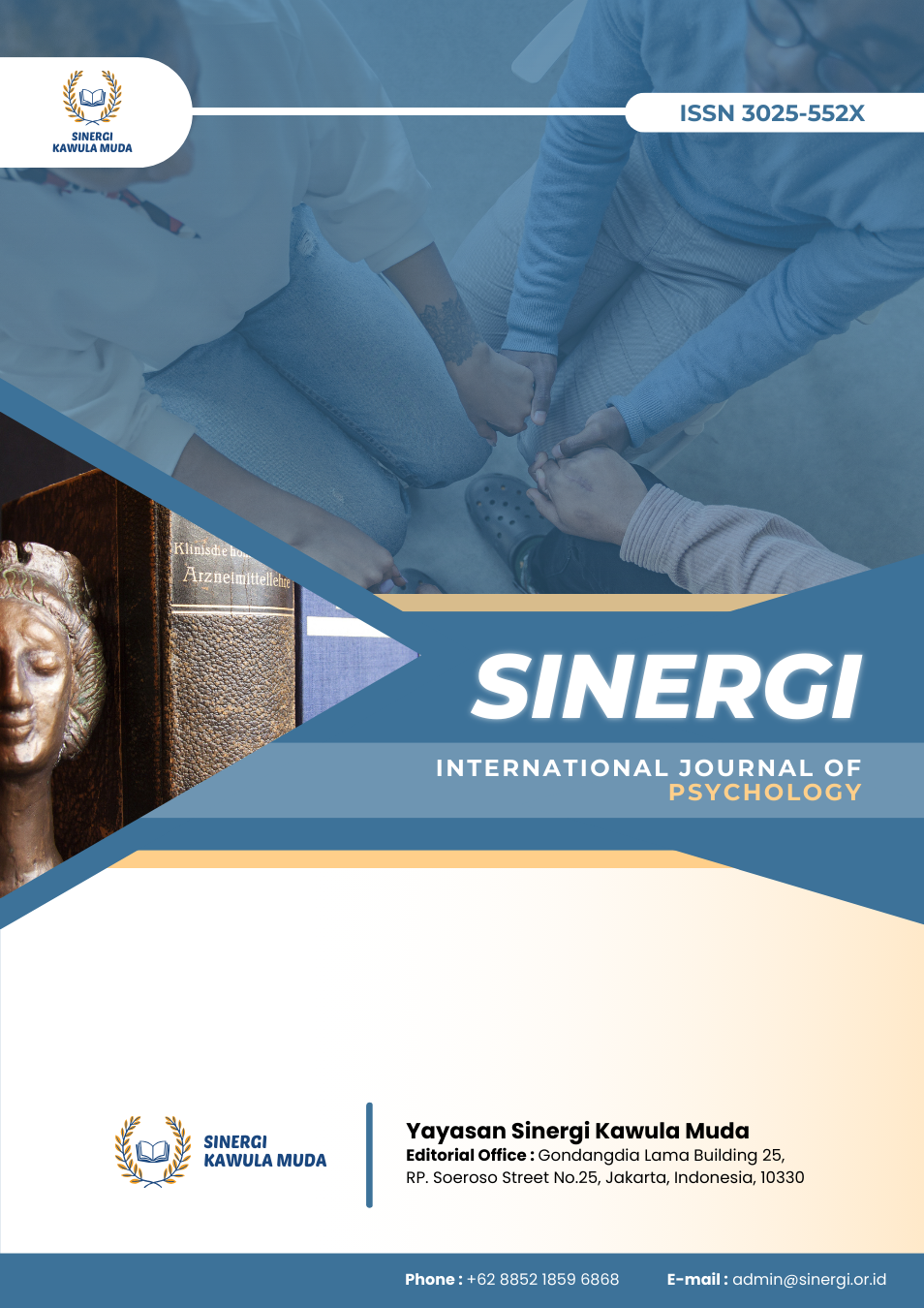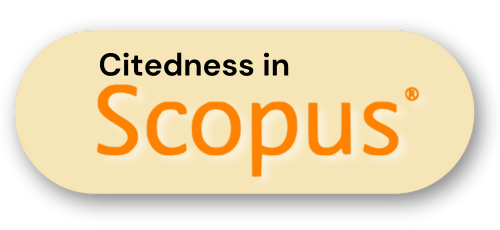The Impact of Self-Dependence and Mood on Students' Learning Commitment
DOI:
https://doi.org/10.61194/psychology.v1i2.104Keywords:
Self-Dependence, Mood, CommitmentAbstract
This quantitative research aims to investigate the influential role of self-dependence and mood-related factors on students' commitment within an educational context. Employing purposive sampling, 41 individuals from distinct classes in a Jakarta school were deliberately selected to ensure a diverse representation of the student population. Through meticulous collection of three primary variables, each comprising two indicators and analysis using SEM-PLS in SmartPLS 4, the study aims to offer a nuanced analysis of these aspects. The research findings reveal significant positive correlations between self-dependence attributes (with confidence and initiative as indicators) and mood (with good perception and good thoughts as indicators) on students' commitment levels. Fostering self-reliance, proactive learning behaviors, and a positive emotional environment emerges as crucial in enhancing students' commitment to their academic pursuits. The implications suggest the importance of targeted interventions and programs within educational institutions to fortify self-dependence and cultivate positive emotional climates, thus augmenting students' commitment and academic success.
References
AS Watson. (2022). How Confident Are Women Nowadays? Women’s Confidence Survey in Asia Reveals: Almost 50% of Women Lack Confidence. News Centre.
Chu, L. (2016). Mediating positive moods: the impact of experiencing compassion at work. Journal of Nursing Management, 24(1), 59–69. DOI: https://doi.org/10.1111/jonm.12272
Cilliers, J., Dube, O., & Siddiqi, B. (2016). Psychology: Reconciling after civil conflict increases social capital but decreases individual well-being. Science, 352(6287), 787–794. https://doi.org/10.1126/science.aad9682 DOI: https://doi.org/10.1126/science.aad9682
Cohen, R., Allaby, C., Cumbaa, C., Fitzgerald, M., Ho, K., Hui, B., Latulipe, C., Lu, F., Moussa, N., & Pooley, D. (1998). What is initiative? User Modeling and User-Adapted Interaction, 8, 171–214. DOI: https://doi.org/10.1023/A:1008398023083
Fauzi, M. F., Anuar, T. S., Teh, L. K., Lim, W. F., James, R. J., Ahmad, R., Mohamed, M., Abu Bakar, S. H., Mohd Yusof, F. Z., & Salleh, M. Z. (2021). Stress, Anxiety and Depression among a Cohort of Health Sciences Undergraduate Students: The Prevalence and Risk Factors. International Journal of Environmental Research and Public Health, 18(6). https://doi.org/10.3390/ijerph18063269 DOI: https://doi.org/10.3390/ijerph18063269
Ghemawat, P. (1991). Commitment. Simon and Schuster.
Ghozali, I., & Latan, H. (2015). Konsep, Teknik, Aplikasi Menggunakan Smart PLS 3.0 Untuk Penelitian Empiris. BP Undip.
Gregory, G., & Kaufeldt, M. (2015). The motivated brain: Improving student attention, engagement, and perseverance. ASCD.
Hall, S. M., Havassy, B. E., & Wasserman, D. A. (1991). Effects of commitment to abstinence, positive moods, stress, and coping on relapse to cocaine use. Journal of Consulting and Clinical Psychology, 59(4), 526. DOI: https://doi.org/10.1037//0022-006X.59.4.526
Harman, G. H. (2015). Thought. Princeton University Press. DOI: https://doi.org/10.1515/9781400868995
Hernández-Peña, H., Lagomarsino-Montoya, M., Aguirre-Martínez, G., Mansilla-Sepúlveda, J., Estay-Sepúlveda, J. G., & Ganga-Contreras, F. (2022). On the Digital Age from Humanistic Psychology. Environment and Social Psychology, 7(1), 73–87. https://doi.org/10.18063/esp.v7.i1.1401 DOI: https://doi.org/10.18063/esp.v7.i1.1401
Ho, Y.-S., Fu, H.-Z., & McKay, D. (2021). A bibliometric analysis of COVID-19 publications in the ten psychology-related Web of Science categories in the social science citation index. Journal of Clinical Psychology, 77(12), 2832–2848. https://doi.org/10.1002/jclp.23227 DOI: https://doi.org/10.1002/jclp.23227
IES-NCES. (2022). Dropout rates. Dropout Rates. https://nces.ed.gov/fastfacts/display.asp?id=16
Kohlberg, L., & Mayer, R. (1972). Development as the aim of education. Harvard Educational Review, 42(4), 449–496. DOI: https://doi.org/10.17763/haer.42.4.kj6q8743r3j00j60
Li, X., & Li, Y. (2023). Individualized and innovation-centered general education in a Chinese STEM University. Education Sciences, 13(8), 846. DOI: https://doi.org/10.3390/educsci13080846
Maharani, F., Mohammad, W., & Ameira, H. M. (2023). Transition from Strain to Support in Job Stress using AI Characters. Himeka: Journal of Interdisciplinary Social Sciences, 1(2), 1–9.
Martin, M. (1990). On the induction of mood. Clinical Psychology Review, 10(6), 669–697. DOI: https://doi.org/10.1016/0272-7358(90)90075-L
Maund, B. (2014). Perception. Routledge. DOI: https://doi.org/10.4324/9781315710631
Mulyanto, H., & Wulandari, A. (2019). Penelitian: Metode & Analisis. CV Agung.
Olaya, D., Vásquez, J., Maldonado, S., Miranda, J., & Verbeke, W. (2020). Uplift Modeling for preventing student dropout in higher education. Decision Support Systems, 134, 113320. DOI: https://doi.org/10.1016/j.dss.2020.113320
Riswani, R., Zalyana, Z., Herlinda, F., Suhertina, S., Zarkasih, Z., & Yasnel, Y. (2020). Online Streaming and Self-Dependence among the Niqabi Students in University. Proceedings of the 19th Annual International Conference on Islamic Studies, AICIS 2019, 1-4 October 2019, Jakarta, Indonesia. DOI: https://doi.org/10.4108/eai.1-10-2019.2291752
Riza, A., Afrianti, R., & Sevrika, H. (2022). Students ’ negative emotions in learning English. Ekasakti Education Journal, 2(2), 142–147.
Sidi, Y., Ackerman, R., & Erez, A. (2018). Feeling happy and (over) confident: The role of positive affect in metacognitive processes. Cognition and Emotion, 32(4), 876–884. DOI: https://doi.org/10.1080/02699931.2017.1346501
Simanjuntak, M. B., Suseno, M., Setiadi, S., Lustyantie, N., & Barus, I. R. G. R. G. (2022). Integration of Curricula (Curriculum 2013 and Cambridge Curriculum for Junior High School Level in Three Subjects) in Pandemic Situation. Ideas: Jurnal Pendidikan, Sosial, Dan Budaya, 8(1), 77–86. DOI: https://doi.org/10.32884/ideas.v8i1.615
Sugiyono. (2019). Metode Penelitian Kuantitatif, Kualitatif dan R&D. Alfabeta.
Wells. (1856). SELF-DEPENDENCE. The Connecticut Common School Journal and Annals of Education, 3(1), 1–4.
Zahira, S. I., Maharani, F., & Mohammad, W. (2023). Exploring Emotional Bonds: Human-AI Interactions and the Complexity of Relationships. Serena: Journal of Artificial Intelligence Research, 1(1).
Zhang, D., Su, T., Lyu, B., Yang, Y., & Zhuo, X. (2022). The effects of adolescent physical activity participation on cell phone dependence: The mediating role of self-control. Work, 72(4), 1289–1298. https://doi.org/10.3233/WOR-210702 DOI: https://doi.org/10.3233/WOR-210702





